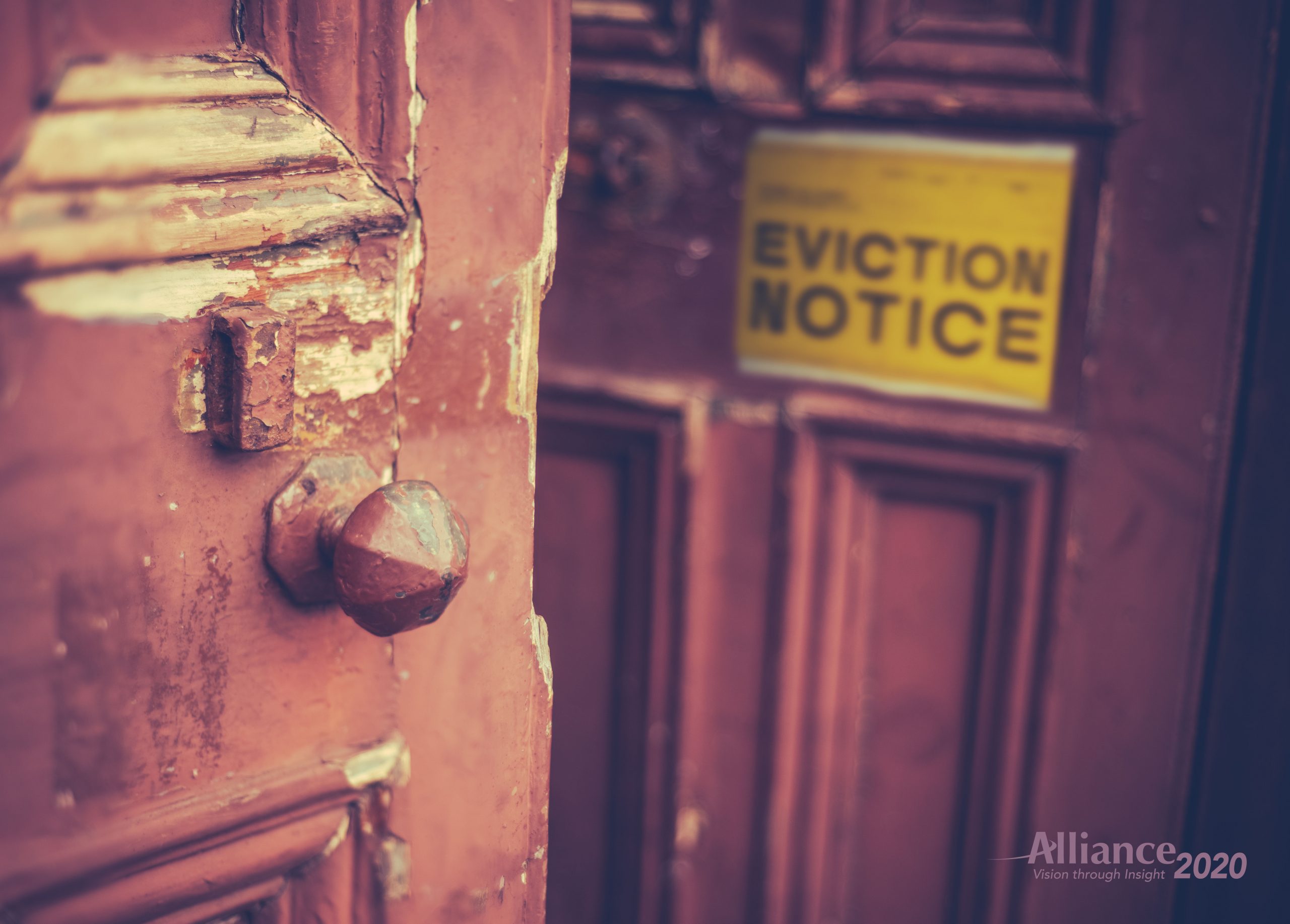Note: Alliance 2020 provides dedication to keeping you informed on the latest industry news. For regular updates, follow us on social media!
The Centers for Disease Control and Prevention (CDC) banned evictions nationwide through the end of the calendar year. The agency identified its goal to stem the spread of the COVID-19 outbreak. The CDC stated, “COVID-19 presents a historic threat to public health.” Public health measures such as quarantine, isolation, and social distancing can be effective to prevent the spread of communicable disease.
However, these measures can only be put in place with stay-at-home directives. Stay-at-home directives become more difficult when people no longer have homes. This will have widespread impacts to renters, landlords, and property management officials. Continue reading to learn more details about how this impacts you as either a tenant or a landlord. To read the full documentation from the CDC, click here.
Applicability & Breakdown
A predominant impact from the outbreak nationwide is job loss. As a result, many people lost a significant amount of their income and may face impending evictions. The moratorium applies to individuals who meet the specific qualifications. These specifications include:
- Expecting to earn no more than $99,000 in annual income for the 2020 calendar year;
- Inability to pay full rent/housing payment due to substantial income loss as a result of the pandemic;
- Continuing to make best efforts to make what payments are possible; and
- Becoming homeless because of an eviction with no alternate housing options.
The CDC also stated that the order does not apply to any governmental level with moratoriums of the same or greater level of public health protection. This ban applies only to those affected by the pandemic. Landlords and property managers may still evict tenants in regards to other issues unrelated to the pandemic. In addition, it is the expectation that renters continue to make payments as they are able.
Complications
The evictions ban is met with mixed results. The predominant emotion is relief. Tens of millions of people will not lose their homes during the middle of the pandemic. The secondary reaction is disappointment. As was the case with the first eviction ban, this only provides a short-term solution for a greater problem. This only alleviates people from eviction temporarily. Those who are unable to pay rent may not worry about eviction for the time being. Unfortunately, the amount they eventually need to pay back will continue to augment.
Housing authorities and coalitions recognize the efforts of the administration. They also recognize that the next essential step requires long-term funding for some kind of emergency assistance program. Ultimately, the most effective solution provides financial relief to keep both renters and landlords in their homes as well as the ability to pay for them.




